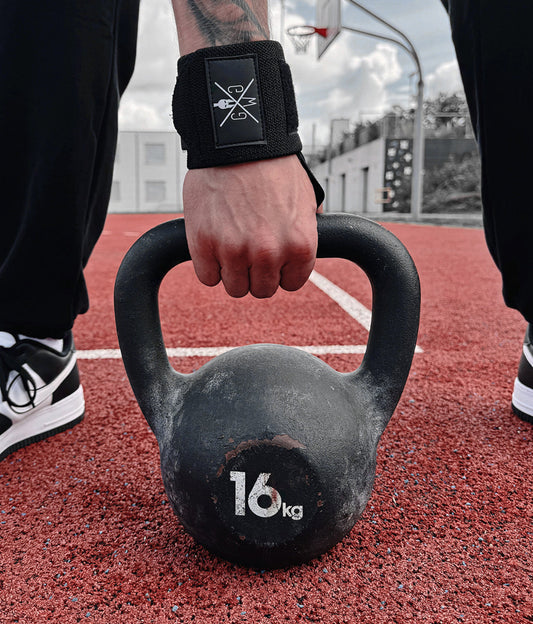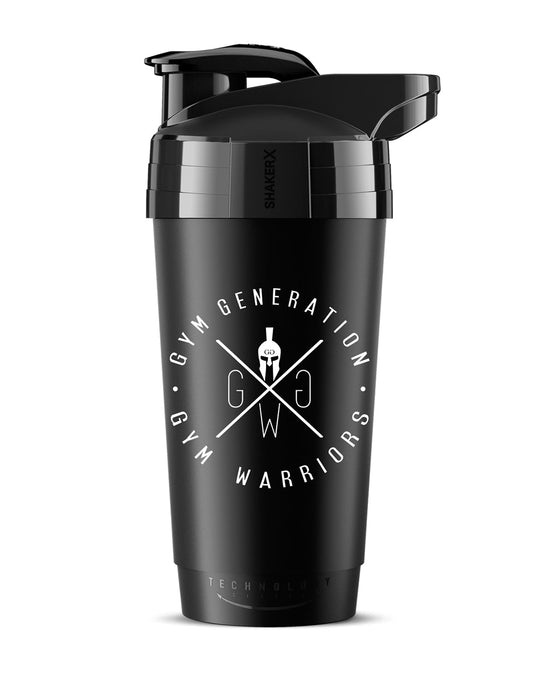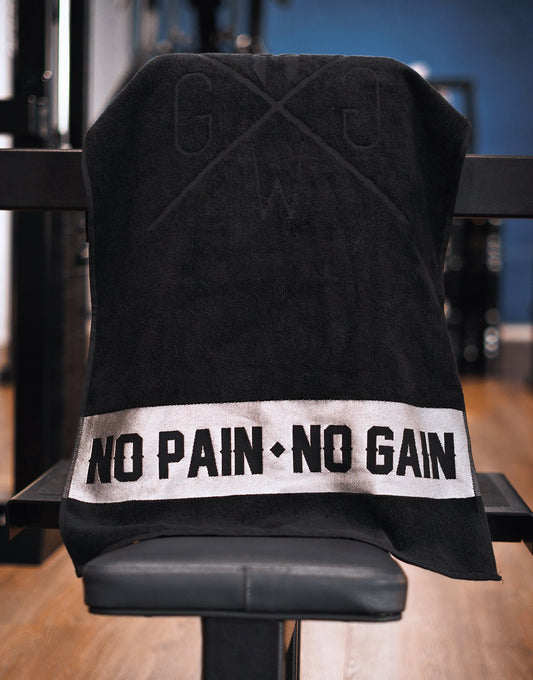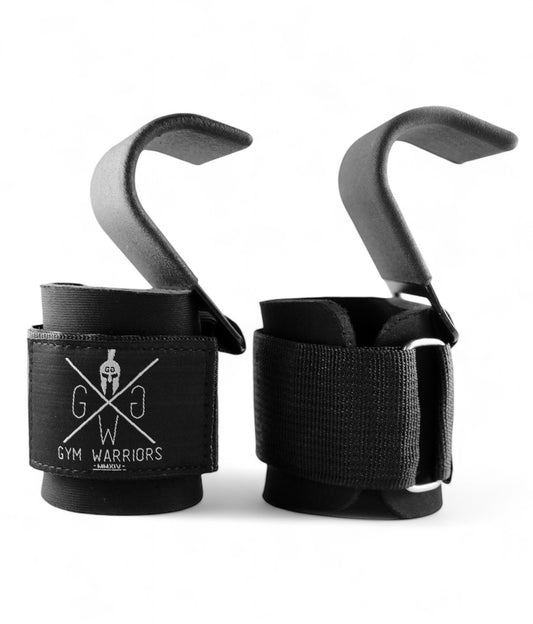
Mass building: This is how the mass phase works
For many athletes, the bulking phase is an essential part of their training cycle. During this time, the aim is to gain mass through targeted muscle building and increased calorie intake. Winter is particularly suitable for this. The thicker layers of clothing help hide the increased body fat that can accompany bulking. In addition, many people have more appetite in the cold season and can therefore more easily achieve a calorie surplus. The busy schedule in winter often leaves more time for intensive training. The mass phase is therefore a time of investment in the body in order to be able to reap the fruits of this work later, in the definition phase.
Nutrition for mass gain
Lean bulk and no dirty bulk!
To achieve a successful bulking phase and build muscle, it is crucial to achieve a calorie surplus. This means that you have to consume more calories than your body burns during the day. This requires a deep understanding of one's daily calorie needs, which are made up of basal metabolic rate and additional energy expenditure through physical activity.
It's not only important to eat more, but also to choose the right foods. The focus should be on high-calorie, yet nutrient-dense foods. Whole grains, legumes, nuts, seeds, fatty fish and avocados are examples of foods that provide a lot of calories but also many important nutrients.
Another important aspect of gaining mass is the quality of the calories. It's not about simply eating more, but eating better. While junk and processed foods can help you achieve a calorie surplus, they often provide empty calories without any significant nutrients. This can lead to unhealthy weight gain and other health problems in the long run.
Lean bulking is an approach that aims to build mass so that you build predominantly muscle while keeping the fat percentage as low as possible. This requires precise calorie intake and balanced macronutrient distribution. Proteins play a crucial role as they are the building blocks for building muscle. Carbohydrates are important for providing energy for workouts and fats are essential for overall health.
To successfully implement lean bulking, it is important to regularly monitor progress, adjust calorie intake and ensure that the diet is balanced and nutritious. It can also be helpful to enlist the help of a nutritionist or trainer to make sure you're on the right track.
Protein-rich diet
Proteins are the building blocks of muscles, so adequate intake is essential. Good sources of protein include meat, fish, eggs and dairy products, but also vegetable proteins from legumes and soy products. It's important to get enough protein throughout the day, not just after exercise. A common guideline is 1.5 to 2g of protein per kilogram of body weight per day .
Meal planning and preparation
Careful meal planning helps meet increased calorie and protein needs. Meal prep, i.e. pre-cooking and portioning meals, can be a big help. This way you always have a healthy and balanced meal ready and you don't fall into the temptation of eating fast food or other unhealthy snacks.
Training for mass building
Effective exercises
Basic exercises such as squats, deadlifts and bench presses are crucial for effective mass building. They stress large muscle groups and promote muscle growth. It is essential to perform the exercises with proper technique to avoid injury and get the most benefit from training.
Read more about the topic of basic exercises here >> 5 basic exercises for quick muscle building
Progressive strength training
A progressive build-up of strength, in which the load is gradually increased, is essential for building mass. This is the only way the body can adapt to growing demands and build muscle. A structured training plan that includes regular increases is very helpful.
Rest and regeneration
Muscles grow during rest, not during exercise. Therefore, getting enough sleep and rest is crucial. Rest days, on which no or very light training is carried out, should also be firmly anchored in the training plan. Active recovery, such as light cardio or stretching exercises, can further promote regeneration.
Additional tips for the mass phase
Dietary supplements can play a valuable role as part of a balanced diet and an effective training plan, especially when it comes to building muscle mass and increasing athletic performance. However, it is crucial to view them for what they are – supplements – rather than replacements for a nutrient-dense, balanced diet.
1. Protein Shakes:
Protein is an essential macronutrient that is essential for building and repairing muscle tissue. Protein shakes are a convenient and efficient way to meet daily protein needs, especially after exercise or other times when it may be difficult to eat a protein-rich meal. They come in a variety of shapes and flavors and can help speed recovery and promote muscle growth.
2. Creatine:
Creatine is one of the most researched and supported nutritional supplements in the area of strength training. It has been shown to increase performance in high-intensity, short-duration activities such as weightlifting and sprinting. Creatine helps replenish energy stores in the muscles, which can lead to improved performance and faster recovery between sets.
3. Multivitamins and Minerals:
Although a balanced diet is the best source of vitamins and minerals, multivitamin supplements can help fill potential nutritional gaps and ensure the body is getting all the nutrients it needs.
4. Omega-3 fatty acids:
Omega-3 fatty acids found in fish oil and other sources are known for their anti-inflammatory properties and may contribute to overall heart health. They may also play a role in reducing muscle soreness and improving joint health.
Measuring success
The success of a mass phase in bodybuilding or weight training is a complex process that cannot only be determined by the number on the scale. In order to get a holistic picture of your own progress and maintain motivation, it is crucial to use various measurement methods and evaluation criteria.
1. Measurement of body mass:
In addition to scales, tape measures are an indispensable tool for tracking muscle growth. By regularly measuring the circumferences of your arms, legs, chest, waist and hips, you can determine very precisely in which areas of the body muscles have been built. This method offers the advantage that it shows specific progress in certain muscle groups and thus helps to adapt the training plan if necessary.
2. Photo documentation:
Recording visual progress is another effective way to document the success of the bulking phase. By taking regular photos from different angles and under the same lighting conditions, you can record changes in your body structure over time. This visual evidence not only provides motivation, but also allows for an objective assessment of one's progress.
3. Monitoring Body Fat Percentage:
Low body fat is not the main goal of a bulking phase, but it is important to keep an eye on it. A too rapid increase in body fat percentage can be a sign that the calorie surplus is too high and the diet should be adjusted. There are several methods for measuring body fat percentage, including skinfold measurements, bioelectrical impedance analysis (BIA), and DEXA scans. Each method has its advantages and disadvantages, but regular measurements can help identify trends and adjust nutrition and training strategies accordingly.
Conclusion
The winter months are the perfect time to work on your body and lay the foundations for a strong, muscular figure. It's the time when you can throw yourself into the work and give your body the nutrients and stress it needs to build muscle. Don't let the cold scare you away - use it as your ally on the way to your dream body.
With a balanced, high-calorie diet and a well-thought-out training plan, you lay the foundation for your success. Every meal and every workout brings you one step closer to your goal. Don't lose focus, even if progress is sometimes not immediately visible. Building muscle takes time and patience, but the work you put in now will pay off.
Regeneration plays an equally crucial role on your journey. Give your body the rest it needs and use the time to become mentally stronger. Visualize your success and stay motivated, even when things get difficult.
Summer bodies are made in winter 💪🏼☀️🌨️
The most important points for successful mass building:
Calorie excess: To build muscle, consume more calories than your body burns.
Balanced macronutrient distribution: Sufficient proteins, carbohydrates and healthy fats are essential.
High-quality protein sources: Focus on meat, fish, eggs, dairy products and plant-based alternatives.
Frequent meals: 5-6 smaller meals spread throughout the day to boost metabolism and ensure consistent nutrient intake.
Strengthening strength training: Focus on compound exercises like squats, deadlifts and bench presses.
Progressive increase in load: Regularly increase intensity and weight to promote muscle building.
Sufficient rest: Enough sleep and breaks between training sessions for regeneration.
Avoid Injuries: Correct exercise and warm-up to prevent injuries.
Supplementation: Use supplementary nutritional supplements if necessary and after careful research.
Patience and consistency: Building muscle takes time; Regular training and well-thought-out nutrition are the key to success.






























